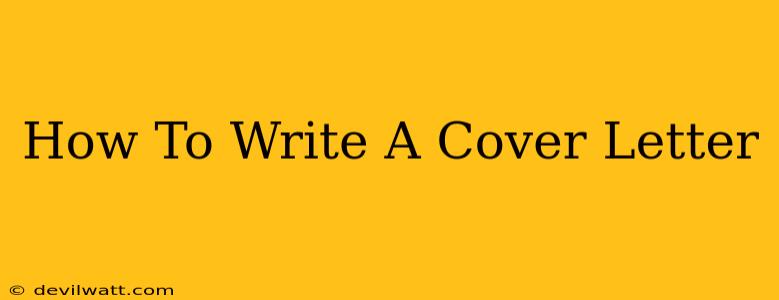Landing your dream job often hinges on a compelling cover letter. It's your chance to showcase your personality, skills, and experience in a way that grabs the recruiter's attention and convinces them you're the perfect fit. This guide will walk you through crafting a cover letter that not only gets read but also gets you called for an interview.
Understanding the Purpose of a Cover Letter
A cover letter isn't just a summary of your resume; it's a persuasive argument for why you are the ideal candidate. It's your opportunity to:
- Highlight relevant skills and experience: Don't just list them; show how they directly address the job requirements.
- Showcase your personality and writing style: Let your unique voice shine through, demonstrating your enthusiasm and professionalism.
- Explain gaps in your resume: Address any potential concerns a recruiter might have about your work history.
- Express your interest in the specific company and role: Show that you've done your research and genuinely want to work there.
Crafting a Winning Cover Letter: A Step-by-Step Guide
Here's a structured approach to writing a cover letter that stands out:
1. The Header: Making a First Impression
- Your Contact Information: Include your name, phone number, email address, and LinkedIn profile URL (optional, but recommended).
- Date: Use a professional date format (e.g., October 26, 2023).
- Hiring Manager's Information: Research the hiring manager's name and title. Addressing the letter to a specific person shows you've put in the effort. If you can't find a name, use a formal salutation like "Dear Hiring Manager."
2. The Opening Paragraph: Hooking the Reader
This is crucial. Start strong! Avoid generic phrases like "I am writing to apply for..." Instead, try something like:
- Mentioning a mutual connection: "Jane Doe, a mutual colleague at [Company Name], suggested I reach out regarding this exciting opportunity."
- Highlighting a specific accomplishment: "My experience leading a team to exceed sales targets by 15% at [Previous Company] directly aligns with the responsibilities outlined in this job description."
- Showcasing your enthusiasm for the role: "I was thrilled to see your opening for a [Job Title] at [Company Name], a company I've long admired for its commitment to [Company Value]."
3. The Body Paragraphs: Showcasing Your Skills and Experience
This section is where you delve into the specifics. Focus on 2-3 key achievements or skills that directly relate to the job description. Use the STAR method (Situation, Task, Action, Result) to structure your points. For example:
- Situation: "At my previous role at [Company Name], our team faced a challenge of [Problem]."
- Task: "My task was to [Your Responsibility]."
- Action: "I took the initiative to [Your Actions]."
- Result: "This resulted in [Positive Outcome]."
Quantify your accomplishments whenever possible. Instead of "improved sales," say "improved sales by 20%."
4. The Closing Paragraph: Reinforcing Your Interest and Call to Action
Reiterate your interest in the position and the company. End with a strong call to action, expressing your eagerness to discuss your qualifications further. For example:
"Thank you for considering my application. I am confident that my skills and experience make me a strong candidate for this position, and I welcome the opportunity to discuss how I can contribute to [Company Name]'s success. I look forward to hearing from you soon."
5. Proofreading and Editing: The Final Touch
Before submitting your cover letter, meticulously proofread and edit your work. Typos and grammatical errors can make a negative impression. Have someone else review it for a fresh perspective.
Keywords to Include in Your Cover Letter
Incorporating relevant keywords from the job description is crucial for Applicant Tracking Systems (ATS). Naturally integrate these keywords throughout your letter, reflecting your genuine qualifications.
Beyond the Basics: Tips for Success
- Tailor your cover letter to each job application: Don't use a generic template. Each cover letter should be specifically tailored to the individual job description and company.
- Keep it concise: Aim for a one-page cover letter. Recruiters are busy and appreciate brevity.
- Use a professional font and format: Choose a clean, easy-to-read font like Times New Roman or Arial.
- Proofread, proofread, proofread! This cannot be stressed enough.
By following these steps, you'll significantly increase your chances of writing a cover letter that opens doors to exciting career opportunities. Remember, your cover letter is your first impression – make it count!

